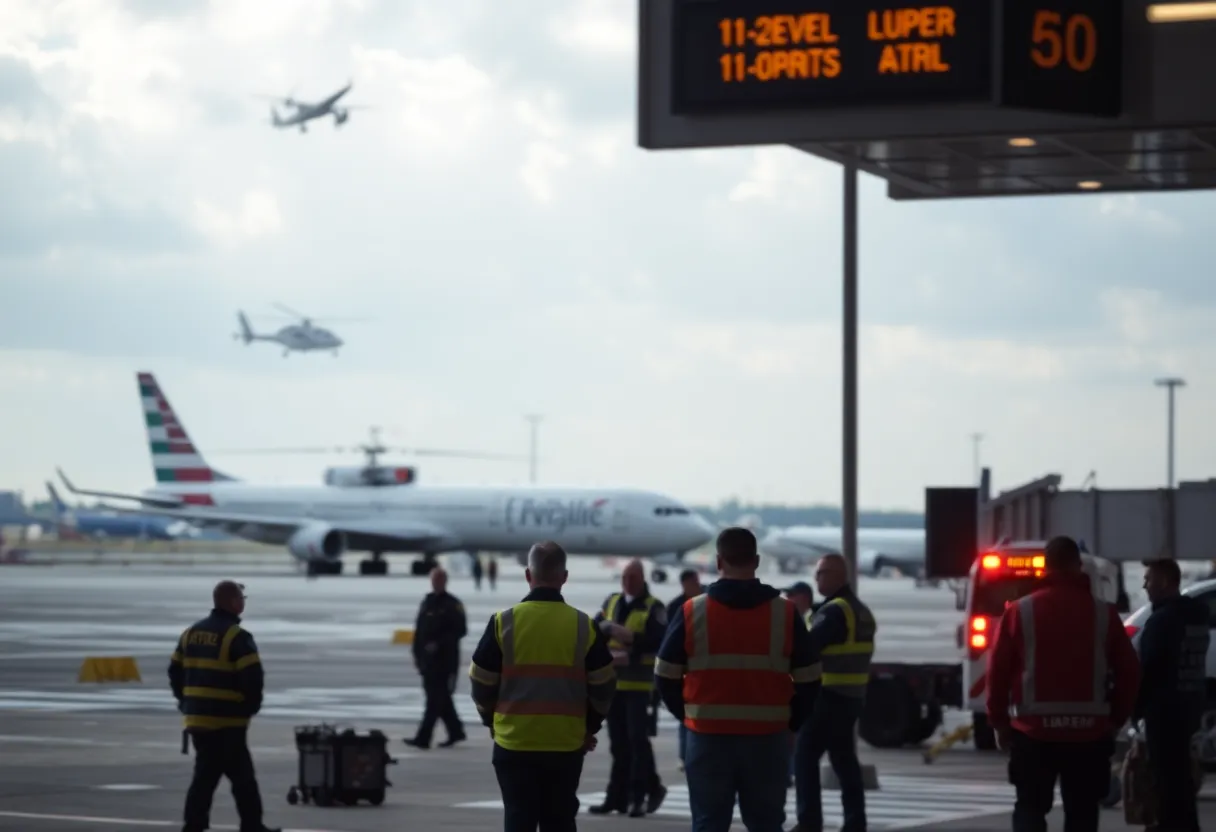News Summary
On January 29, 2025, a catastrophic midair collision near Reagan National Airport claimed the lives of 67 people, including passengers from an American Airlines flight and soldiers from a U.S. Army Black Hawk helicopter. Investigations are underway to determine the causes of this tragedy, amidst growing concerns about air traffic management and altitude regulations. The community mourns the loss of competitive skaters and Army personnel, as the aviation industry braces for lessons and preventive measures in the wake of this disaster.
Tragedy in the Skies: A Deadly Collision Near Washington D.C.
January 29, 2025, will forever be remembered as one of the darkest days in U.S. aviation history. A terrible midair collision unfolded near Reagan National Airport, claiming the lives of 67 individuals on board an American Airlines flight and a U.S. Army Black Hawk helicopter. It’s a shocking event that has left families, communities, and the nation in mourning.
The Fateful Encounter
A total of 60 passengers and four crew members were on American Airlines Flight 5342 when it tragically collided with the military helicopter. As outlined in preliminary investigations, the crash occurred around 9 p.m. while the two aircraft were operating in a tightly controlled airspace filled with traffic. Witnesses and experts noted that neither aircraft appeared to have taken any evasive action prior to the catastrophic impact, which has further raised questions about pre-accident communications.
Details of the Aircraft and Conditions
At the moment of the unfortunate collision, the American Airlines jet had slightly increased its pitch just seconds before impact, which investigators believe signals a reaction to the impending disaster. Meanwhile, the Black Hawk helicopter was reportedly conducting a training exercise focused on evacuation procedures during catastrophic events. Conflicting information has emerged over the helicopter’s altitude, as it was purportedly flying at an altitude of around 300 feet, exceeding the federally mandated limit of 200 feet for helicopters in the corridor.
A Cause for Concern
The discrepancy in altitude has raised eyebrows not only within the aviation community but also among government officials. Key figures have expressed their concerns over air traffic management, especially given that air traffic control at Reagan National Airport was reportedly understaffed at the time of the incident. Eyewitness accounts indicate that air traffic controllers had instructed the helicopter to pass behind the incoming passenger jet shortly before the crash, adding layers to the ongoing investigation.
Victims and Community Convulsion
This tragic incident has left an especially harsh mark on the figure skating community, as many of the victims were competitive skaters returning from a development camp in Kansas. The pain extends further, as the lives of three Army soldiers—Capt. Rebecca Lobach, Staff Sgt. Ryan Austin O’Hara, and Chief Warrant Officer 2 Andrew Lloyd Eaves—were also lost in this accident. Out of the total of 67 fatalities, a somber 42 bodies have been recovered, with 38 individuals positively identified thus far.
Investigations Underway
Efforts to understand the cause of this tragic incident are in full swing. Investigators have already begun examining air traffic control logs and interviewing personnel. Recovery efforts for wreckage and remains continue, while investigators have successfully retrieved both American Airlines flight data and cockpit voice recorders, alongside the black box of the helicopter. However, federal officials have emphasized that while preliminary reports may emerge in about 30 days, a comprehensive investigation could stretch for much longer.
Community Response
With the aviation community and the public in grief, many community leaders have expressed their heartfelt condolences to the families who have suffered such enormous losses. It’s a reminder of how precious life is and the impacts of tragedy ripple through families and friendships.
Moving Forward
The Federal Aviation Administration (FAA) has taken proactive steps in response to this disaster by temporarily closing the low-altitude helicopter corridor involved in the collision. The aim is to ensure thorough investigations are conducted to prevent any future occurrences. This incident highlights the necessity for rigorous airspace management and possibly examining air traffic controller staffing levels to manage such tightly controlled corridors effectively.
As families begin the painful healing process, the aviation community braces itself for the outcome of the investigation and the lessons it may yield to prevent such utter devastation from occurring again. The legacy of those lost will undoubtedly leave an imprint that extends far beyond the realm of aviation.
Deeper Dive: News & Info About This Topic
- Washington Post: DCA Plane Crash Victims List Profiles
- Wikipedia: Aviation Accidents and Incidents
- CNN: Black Hawk Helicopter-Plane Collision Investigation
- Google Search: DC Plane Crash Investigation
- New York Times: Washington DC Plane Crash Maps & Photos
- Encyclopedia Britannica: Air Traffic Control
- ABC News: Reagan Airport Crash Live Updates
- Google News: Reagan National Airport Plane Crash







